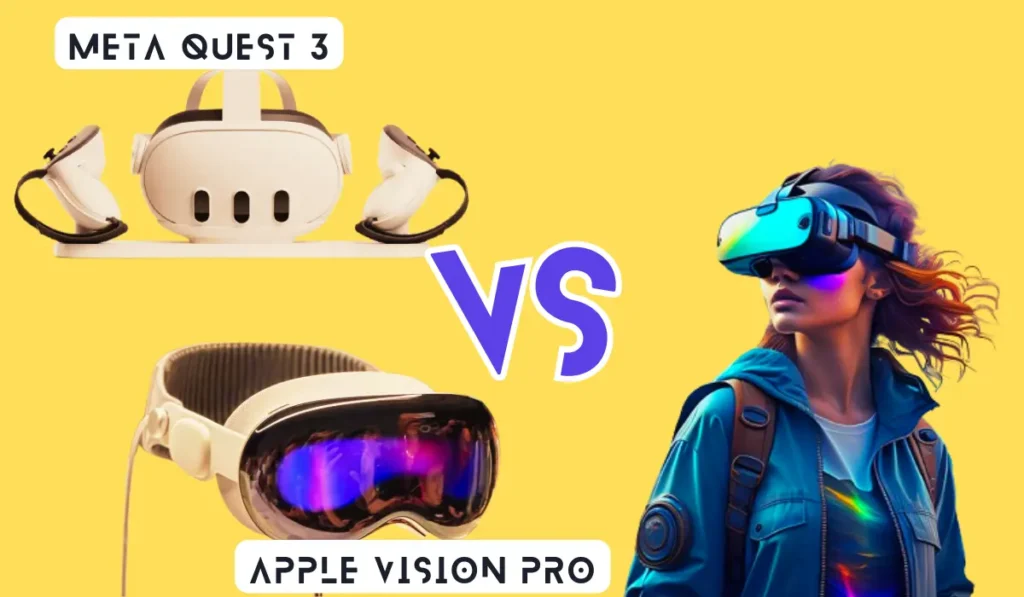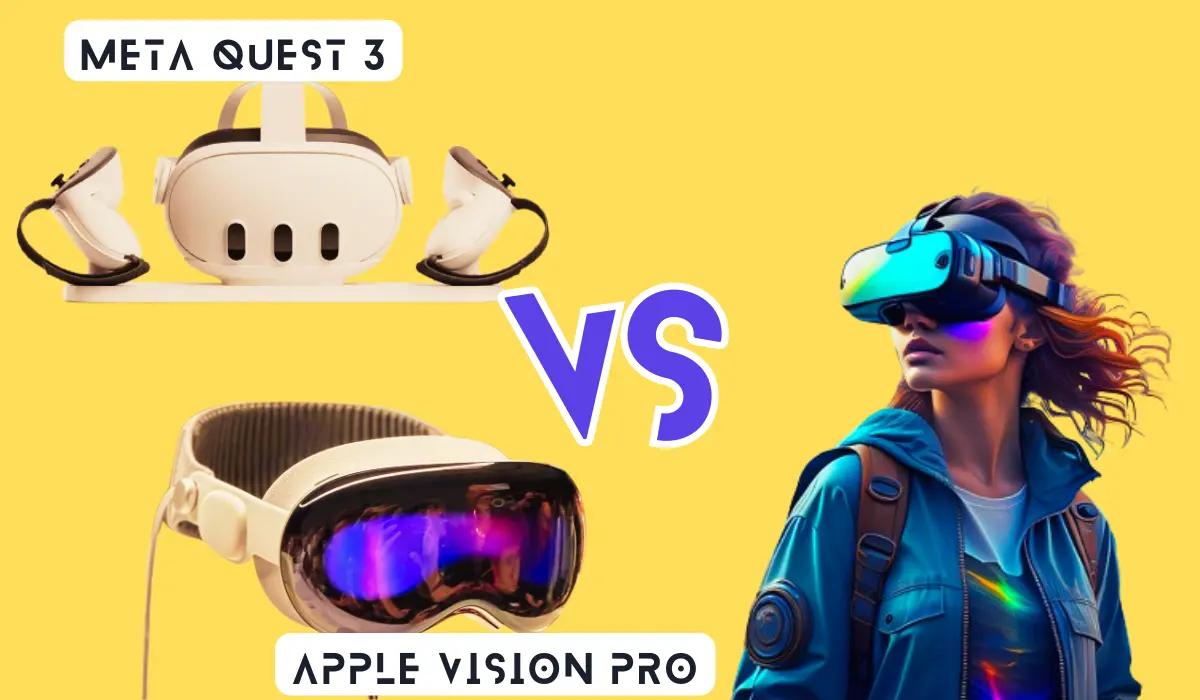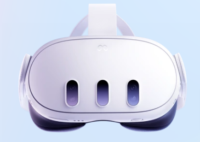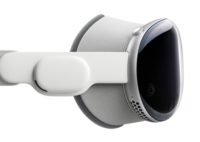
The VR scene is getting hot! With the latest announcement of Meta Quest 3 and Apple’s much-anticipated Vision Pro, consumers are confronted with a difficult decision which one is the best? This detailed analysis delved into the main characteristics, strengths, and flaws of both devices and will help you pick the ideal VR partner for your needs.
Designed for Different Audiences
Before getting into the specifics it is important to know the fundamental differences between the philosophies of these headsets. Meta Quest 3 positions itself as an most accessible VR contender by focusing on the affordable pricing, a huge collection of games, and ease of use. Apple Vision Pro, on the other hand, is geared towards those who are tech-savvy looking for a premium experience, featuring cutting-edge graphics and seamless integration with Apple’s ecosystem and productivity apps.
Display: A Tale of Two Technologies
The main component of every VR immersive experience lies in the screen. Here’s a rundown of the visual strengths of each headset:
- Meta Quest 3: Uses LCD panels that have resolutions of 2064 x 2208 pixels per eye, 1218 PPI and an average refresh rate of 120 Hz. This provides a clear and smooth viewing experience especially in games with a high speed of play.
- Apple Vision Pro: Features super-high resolution displays that are micro-OLED that boast a whopping of 3660 x 3200 pixels per eye, 3386 PPI. This results in better clarity of images, more blacks, and possibly larger color ranges. However, some users experience visible motion blur because of this 90Hz rate of refresh.
Processing Power: Powering the Virtual World
The processing power behind the headset has a significant impact on performance and graphic fidelity. Here’s the features each headset has:
- Meta Quest 3: With the specially designed Qualcomm Snapdragon XR2 processor, it provides plenty of power to run the majority of VR games and apps. It is expected to run smoothly particularly in games optimized specifically for Quest platform.
- Apple Vision Pro: The much-anticipated M2 Pro chip, which boasts higher processing capabilities than Quest 3. Quest 3. This means that it will provide better visuals when it comes to demanding VR experiences as well as the ability to handle multitasking tasks that are complex easily.
Content Libraries: A World of Difference
A important elements that is essential for VR fans is the library of content. Let’s look at what each headset has to offer:
- Meta Quest 3: Benefits from a huge and constantly growing collection of VR games, experiences and apps. Its Meta Quest Store has a broad selection of games, ranging from action-adventure games like Beat Saber to social experiences such as VRChat. Furthermore, the Quest 3 allows for PC VR connectivity through Oculus Link, which opens the way to an extensive collection of SteamVR games.
- Apple Vision Pro: The platform currently only has a limited collection of content at the time of launch. Although Apple is expected to create an extensive range of VR experiences, the first version may be smaller in comparison to the well-established Quest platform. However it’s Vision Pro seamlessly integrates with Apple Arcade which provides an extensive library of mobile games that play on a big screen virtual.
Controls, Tracking and Controllers: How to interact with VR
Interactive interaction in the virtual environment is vital to create a truly immersive experience. Here’s how each headset handles input:
- Meta Quest 3: includes a pair elegant touch controllers that offer excellent tactile feedback as well as exact thumbstick controllers. These controllers are perfect for a range of VR games and experiences, offering a smooth interaction. In addition it supports hand tracking. Quest 3 supports hand tracking and allows a completely hands-free experience with certain apps.
- Apple Vision Pro: It currently relies entirely on hand tracking to interact. Although Apple boasts the most advanced hand tracking, some users have reported limitations when compared to dedicated controllers, especially in games with high-speed movements or other applications that require precise manipulation. It is important to remember that Apple could launch VR controllers later in near future.
Connectivity and Ecosystem Integration
The seamless connectivity and the ability to integrate with other devices can help enhance an experience in VR. Here’s a summary of the strengths of each headset:
- Meta Quest 3: It operates as a standalone device that eliminates the requirement for a high-powered PC. However, it is able to connect to a VR-capable PC through Oculus Link to access PC VR games. Quest 3 Quest 3 integrates well with the Meta ecosystem, which allows for an easy social interaction as well as sharing of content between users.
- Apple Vision Pro: Created to seamlessly integrate seamlessly with Apple’s ecosystem. It is wirelessly connected to iPhones as well as iPads and Macs which allows users to make use of existing devices to create content or productivity tasks as well as mirroring experiences inside VR. However it’s true that Vision Pro Vision Pro requires a compatible Apple device to function.
Meta Quest 3 vs. Apple Vision Pro Price and Value Proposition
Cost is a major aspect for many VR fans. Here’s an overview of price:
- Meta Quest 3: The game starts at a reasonable price of $499, which makes it an affordable entry point to VR. The price, when paired with its vast library and easy-to-use make it an ideal choice for those who are new to VR and budget-conscious VR enthusiast.
- Apple Vision Pro: It comes with a price of $3499 which is much more expensive than Quest 3. The price is a reflection of its state-of-the-art technology, better display, and seamless integration into Apple’s Apple ecosystem. However, the small collection of content available when it launched and absence of dedicated controllers for this price could deter some buyers.
The Verdict: Choosing the Right Headset for You
The choice between Meta Quest 3 and Apple Vision Pro boils down to your individual needs and priorities. Here’s a quick breakdown to help you decide:
Choose Meta Quest 3 if:
- You’re a VR newcomer seeking an affordable and accessible entry point.
- You prioritize a vast library of games and experiences.
- You value ease of use and standalone operation.
- You enjoy fast-paced VR games requiring precise controls (controllers included).
Choose Apple Vision Pro if:
- You’re a tech-savvy user seeking the absolute best visual experience.
- You’re deeply invested in the Apple ecosystem and desire seamless integration.
- You prioritize cutting-edge technology and future-proofing your VR investment.
- You value productivity applications and the ability to leverage existing Apple devices within VR.
Features and Pricing Meta Quest 3 vs Apple Vision Pro
| Meta Quest 3 | Apple Vision Pro | |
| Max Reoslution (Per Eye) | 2064 x 2208 | 3660 x 3200 |
| PPI | 1218 | 3386 |
| Max Refresh Rate | 120Hz (72Hz, 80Hz, 90Hz, 120Hz) | 100Hz (90Hz, 96Hz, 100Hz) |
| Screen Type | LCD displays | micro‑OLED display |
| Storage | 128GB and 512GB options | 256GB, 512GB and 1TB |
| Controllers | Touch Plus controllers, hand tracking | Hand and eye tracking |
| Battery | Internal Li-ion battery (2-2.5 hours) | External battery (2-2.5 hours) |
| Weight | 515 grams | 600-650 gram |
The Future of VR
Each Meta Quest 3 and Apple Vision Pro make significant progress on the way to VR technology. They are both revolutionary in their own way. Quest 3 pushes the boundaries of accessibility and variety of content as well as it’s Vision Pro showcases the potential for breathtaking visuals as well as seamless integration into existing platforms. When VR tech continues to advance we can anticipate new and innovative features, more extensive library of content, and possibly lower costs. Future of VR is bright as it is both Meta along with Apple are making a mark on this exciting field.
Additional Considerations
Beyond the basic capabilities, here are some other things to be aware of:
- The Comfort Test both VR headsets when you can, to ensure a good wear for prolonged VR sessions.
- Long-term durability Take into consideration the quality of construction as well as the use and wear on every headset.
- Software Updates The two companies share a an established history of providing continuous software updates and feature enhancements.
- Personal Preferences: Ultimately, the most suitable VR headset is one that is most compatible with your personal preferences and needs.
We hope that this thorough analysis helps you make an informed choice about the right VR headset. As the VR technology continues to develop be sure to keep an eye on the website for more news and exciting developments in the ever-growing technology revolution.




